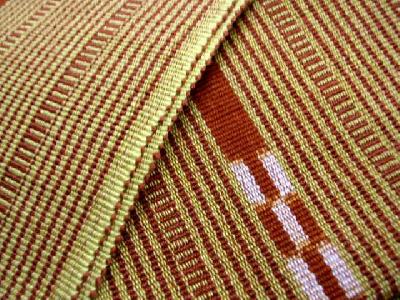|
Kisaburo Ogawa was born in November 30, 1936. He is recognized as the holder of the important intangible cultural heritage of kenjyo-hakata-ori and was designated a living national treasure in 2003. Kisaburo Ogawa is also a guest professor of fine art at Kyushu Sangyo University.
Kenjyo-hakata-ori or Hakata weaving dates back 700 years to the Kamakura period. It gets its name because it was a gift bestowed annually by the Kurota clan to the government in the Edo period.
The weaving's trait is the thick-layered fabric and its silky touch, and was mainly used to weave sashes. Although this traditional craft is woven on a loom, the industry faces a dilemma in that there is no successor. The Hakata Weaving Association is making products other than sashes, to keep and develop the tradition. For example, they are making bags and wallets to attract younger people. Mr Ogawa, being a member of the association, works energetically as a panel member in symposiums and gives speeches.
Kenjyo-hakata-ori or Hakata weaving dates back 700 years to the Kamakura period. It gets its name because it was a gift bestowed annually by the Kurota clan to the government in the Edo period.
The weaving's trait is the thick-layered fabric and its silky touch, and was mainly used to weave sashes. Although this traditional craft is woven on a loom, the industry faces a dilemma in that there is no successor. The Hakata Weaving Association is making products other than sashes, to keep and develop the tradition. For example, they are making bags and wallets to attract younger people. Mr Ogawa, being a member of the association, works energetically as a panel member in symposiums and gives speeches.
| [+ADDRESS] | 
|















